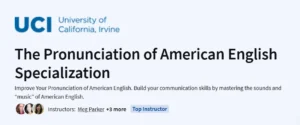Beginning Flutter: Android Mobile App Development Course
An end-to-end, interactive Flutter course that takes you from SDK setup to publishing your Android app in just 10 hours.
What will you learn in Beginning Flutter: Android Mobile App Development Course
Set up and configure the Flutter SDK and Android emulator to run your first app
Build UI layouts with Flutter widgets, including
SafeArea,Scaffold, and custom componentsManage widget state and lifecycle with stateless and stateful widgets
Customize app appearance using Flutter Themes and switch between light/dark modes
Fetch and parse JSON data from a REST API to populate a dynamic movie listing
Program Overview
Module 1: Introduction
⏳ 20 minutes
Topics: Flutter SDK overview; cross-platform basics; Dart essentials
Hands-on: Navigate the interactive playground and run your first Flutter command
Module 2: Hello Flutter!
⏳ 55 minutes
Topics: Project structure; SafeArea, Scaffold, and core widgets; stateless vs. stateful widgets
Hands-on: Scaffold a new Flutter app, add greeting text, and complete the chapter quiz
Module 3: Build Your Contact Profile Page
⏳ 1 hour 15 minutes
Topics: AppBar, Container, ListView, and profile layout; interactive list items
Hands-on: Construct a Contact Profile page with actions, phone numbers, and address sections
Module 4: Flutter Themes
⏳ 45 minutes
Topics: Global vs. local theming; modular theme files; dark mode implementation
Hands-on: Define and switch between light and dark themes using a FloatingActionButton
Module 5: MovieApp: Fetching Data from REST API
⏳ 1 hour 15 minutes
Topics: HTTP requests with
httppackage; JSON parsing; custom widgets for data displayHands-on: Fetch movie data from TMDB API, map JSON to models, and style a MovieTile widget
Module 6: Where to Go from Here
⏳ 10 minutes
Topics: Advanced Flutter resources; next steps for state management and plugins
Hands-on: Explore links to state-management packages and performance tips
Module 7: Appendix: Installation & Setting up Flutter
⏳ 25 minutes
Topics: SDK installation on Windows/Mac/Linux; IDE selection; emulator setup
Hands-on: Install Flutter SDK, configure VS Code or Android Studio, and launch an Android emulator
Get certificate
Job Outlook
Mobile developers earn an average of $112,000 per year in the U.S.
Employment of software developers is projected to grow 17% through 2033
Flutter expertise is increasingly sought after for cross-platform apps in startups and enterprises
Freelance opportunities abound for rapid prototyping and full-stack mobile projects
- Fully in-browser, no-setup environment accelerates learning
- Comprehensive 10-hour curriculum covering practical app scenarios
- Real-world exercises: Contact Profile page and MovieApp API integration
- Text-only format may not suit learners expecting video tutorials
- Lacks deeper coverage of advanced state-management solutions (e.g., BLoC, Riverpod)
Specification: Beginning Flutter: Android Mobile App Development Course
|
FAQs
- Flutter is inherently cross-platform, supporting both Android and iOS.
- Widgets and layouts automatically adapt to platform conventions.
- Minimal changes may be needed for platform-specific features or permissions.
- Hot reload allows quick testing across different simulators.
- Enables building a single codebase for multiple mobile platforms efficiently.
- Stateless and Stateful widgets are introduced for simple state handling.
- For larger projects, BLoC, Riverpod, or Provider offer robust solutions.
- Proper state management ensures maintainable and testable code.
- Enables separation of UI and business logic for cleaner architecture.
- Facilitates collaborative development in team-based mobile projects.
- Flutter supports HTTP requests using the
httppackage or Dio library. - JSON data can be parsed and mapped to Dart models for dynamic content.
- Can connect to REST APIs, GraphQL endpoints, or Firebase services.
- Enables real-time features like chat, notifications, or live updates.
- Skills extend to full-stack mobile app development when combined with backend knowledge.
- Use const constructors where possible to reduce widget rebuilds.
- Leverage lazy-loading widgets like ListView.builder for large lists.
- Avoid excessive nested widgets by modularizing UI components.
- Profile and debug using Flutter DevTools for memory and frame rate insights.
- Reduces lag and improves user experience on low-end devices.
- Mobile App Developer roles for startups, agencies, or enterprises.
- Freelance cross-platform app development for rapid prototyping.
- UI/UX-focused developer building interactive apps.
- Full-stack developer integrating Flutter frontends with backend services.
- Technical trainer or content creator teaching Flutter development.





